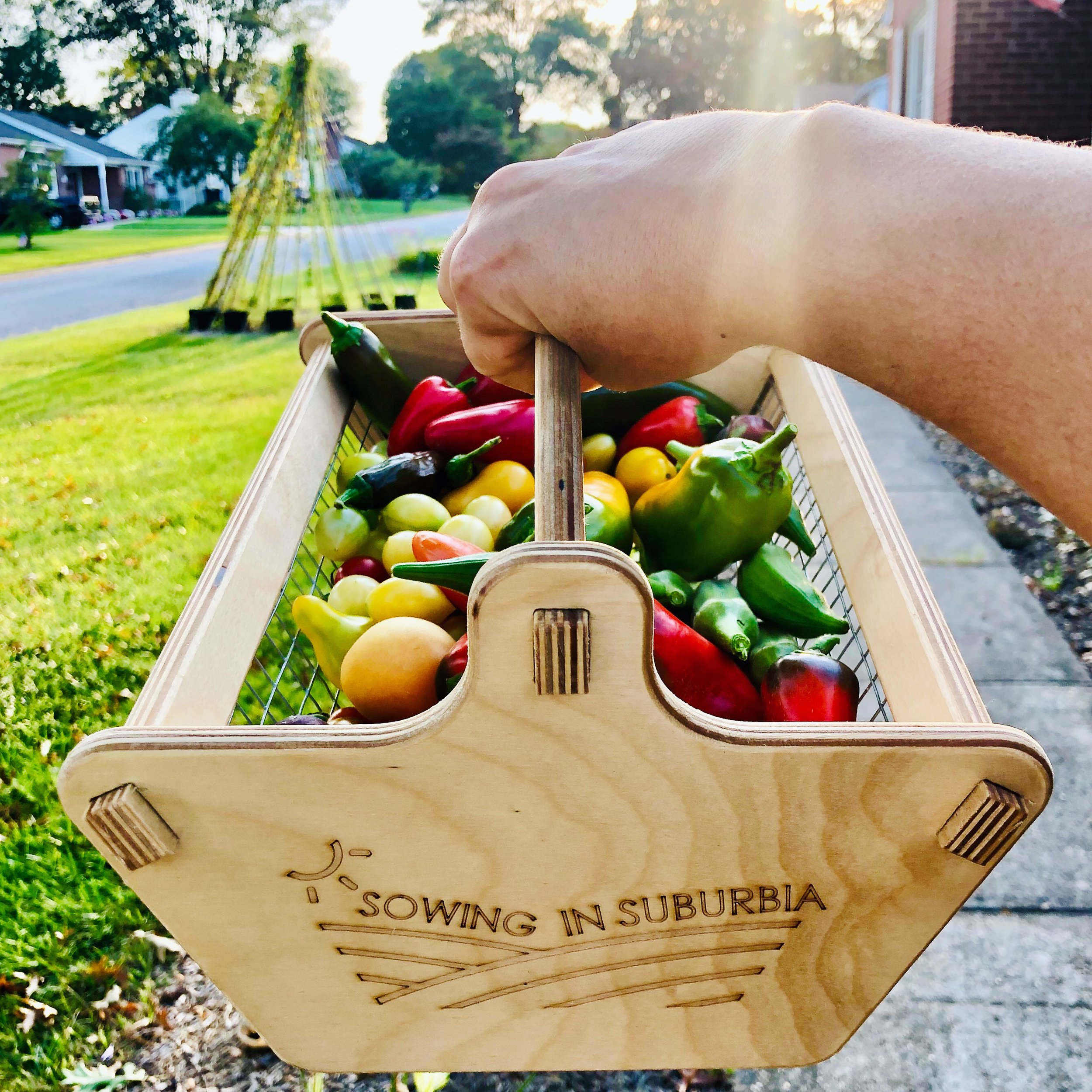10 Vegetables to Grow Vertically in the Home Garden
Vertical gardening is a growing technique that every gardener should use. Not only does it allow you to grow more in less space, but it also promotes better airflow which leads to healthier plants. From elaborate metal arbors to simple pieces of string, there are a multitude of ways to create vertical structures to support your plants.
Bamboo is one of my favorite natural materials for building trellises. We have built entire trellises out of bamboo and also used it to extend the reach of traditional metal tomato cages. Using 16 ft. x 50 in. cattle panel fencing to create arched garden trellises is my favorite method of growing vegetables vertically.
Below is a list of 10 plants perfect for vertical growing in any home garden.
1) Tomatoes
This is my favorite veggie to grow vertically.
When we first started gardening, we used to let our tomato plants grow wild. But disease-free tomato plants need proper air circulation and pruning. Indeterminate (or vining) tomatoes can also grow up to 8 feet tall!
Growing vertically has improved our harvests and allowed us to grow more in less space. When growing vertically on our arched cattle panel trellises, I can also get away with spacing the tomato plants 2 feet apart.
Some of my favorite varieties are Cherokee Purple, Sun Gold, Brandywine, Green Zebra, and Sunset Bumblebee.
2) Beans
Pole beans are another no-brainer when it comes to growing vertically, and most varieties require support. We typically grow green Blue Lake FM-1K and purple Blauhilde pole beans. Scarlet Runner beans are also a great variety to grow vertically. They are both edible and ornamental with beautiful red flowers.
3) Peas
Snow peas and snap peas are perfect for vertical gardening. These cool-weather veggies grow the best in early spring but can also be grown as a fall crop. In addition to the traditional green varieties, Sugar Magnolia purple snap peas might have to be my favorite. Pea foliage and flowers are also gorgeous enough to earn a spot in even a front yard garden.
Bonus: they form symbiotic relationships with nitrogen-fixing bacteria that help improve your soil.
4) Squash
There are two types of squash: bush and vining. Many summer squash are bush varieties and winter squash are vining (although there are plenty of exceptions). Winter squash frequently grow on long vines and have tougher skins making them excellent for storing.
Butternut and spaghetti squash are two of my favorite varieties. Honeynut is a smaller version of butternut squash, and I am excited to give them a try this season. I am also going to be growing Honey Boat delicata squash for the first time that produce 9-to-12-foot vines perfect for vertical gardening.
Note: Garden arches were created using 16 ft. x 50 in. cattle fence panels from Tractor Supply.
5) Spinach
Technically, Malabar spinach isn’t really “spinach”, but it looks just like it. This variety of leafy greens is native to the tropics, so it grows great in hot weather. I first discovered this plant when watching The Gardening Channel with James Prigioni on YouTube. It grows well on a teepee or pyramid-style trellis and even fences.
6) Pumpkins
Growing small pumpkin varieties is a great way to save space. Pumpkin plants are notorious for taking up garden real estate. While it may be difficult to grow larger pumpkins, smaller varieties grow great along various types of trellises. Some smaller varieties to consider are Jack Be Little, Small Sugar, and white Casperita pumpkins.
7) Gourds
They are some of the more fun and quirky vegetables in the Cucurbit family. Most of the hard-shelled gourds that are used as fall decorations are great for growing vertically. Birdhouse gourds are another interestingly shaped gourd that can create picturesque vertical gardens. Luffa gourds are another type of gourd that have become popular to grow. Who wouldn’t want to grow their own sponge?
8) Cucumbers
This is another vegetable that we only grow vertically. Cucumbers also come in both bush and vining types, and proper airflow is important for preventing fungal disease. Growing vining cucumbers vertically saves space and produces healthier plants. We have grown both larger slicing and pickling varieties vertically with success, and I typically space the plants about 6-8 inches apart. Some of my favorite varieties are Muncher, Straight Eight, Marketmore, and Japanese Long.
Follow me on Instagram for more tips and inspiration!
9) Melons
Melons are not my favorite thing to grow vertically because they require some support once they grow larger (or they can snap off the vine). Last year was my first attempt at growing melons vertically, and it did not end so well. The plants started off great but were taken out on multiple occasions by pests. It was not our year for melons.
If supported properly, vertical gardening can be a great way to grow melons (as long as they aren’t murdered by squash bugs and vine borers). I am going to give it another try this year. I have seeds for two interesting varieties: Golden Honeymoon and Rajasthan Honey.
10) Cucamelons
Last, but not least, these adorable veggies are perfect candidates for growing vertically. They go by many names (Mexican Sour Gherkin, cucamelon, mouse melon) but are neither cucumber nor melon. While the plants can take a while to take off, once they do, they can easily take over a trellis. These grape-sized fruits taste like a crunchy (slightly tart) cucumber but resemble a watermelon. One or two plants is more than enough to provide generous harvests up until the first frost.



































